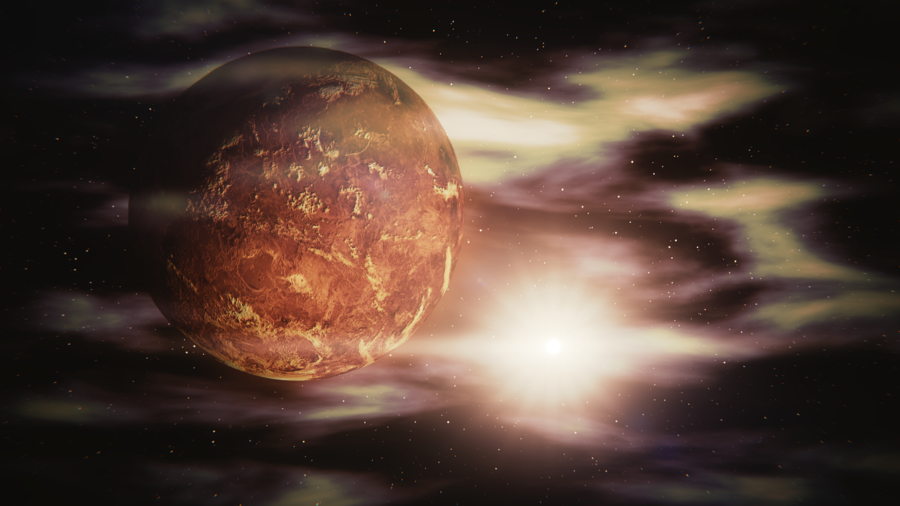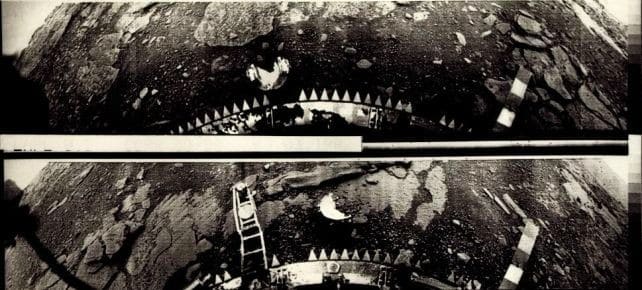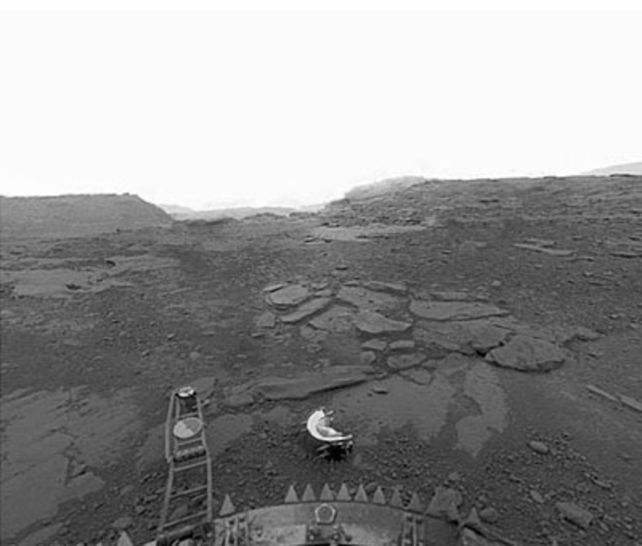The Only Photos Taken On Venus Are So Creepy

Pictures of Venus are certainly hard to come by, but ScienceAlert shows that the images we do have portray a very dangerous and eerie planet. Though Venus is very similar to Earth in size, composition, and density, the second rock from the Sun is far from safe or inhabitable for human life.
The surface of Venus is tightly wrapped in an atmosphere of toxic gases and acidic clouds. The temperature on the surface of Venus averages around 867 degrees Fahrenheit (464 degrees Celsius), and the atmospheric pressure of the planet is nearly 100 times more than the Earth’s.
Venera 7 was the first-ever space probe to make a successful soft landing on another planet.
Unprotected, a human wouldn’t last more than a few seconds on the planet without imploding or burning up. Thanks to the dense, toxic atmosphere on Venus, the Greenhouse Effect has taken over, creating a super hostile place that is also super difficult for humans to adequately explore.

Over the years, there have only been a handful of images brought down from Venus, and those images were last captured by the Soviet Union, between 1961 and 1984. The Soviets ran a space program called Venera whose main goal was to explore the surface of Venus.
The program was considered a clear success after sending 16 various probes to the mysterious planet and landing eight of the 16 probes on the surface of Venus. Venera was the first program to ever successfully enter another planet’s atmosphere in 1966, and in 1970, Venera 7 was the first-ever space probe to make a successful soft landing on another planet.
Of the eight probes that successfully landed on the surface of Venus, Venera 12 was the one that latest the longest before being destroyed by the hostile conditions of the planet. Venera 12 lasted for nearly two hours before it too was wrecked.
Though Venus is very similar to Earth in size, composition, and density, the second rock from the Sun is far from safe or inhabitable for human life.
Venera 9, 10, 13, and 14 were all able to capture panoramic images of Venus while on the surface of the planet. Venera 13 and 14 were also able to capture sound while exploring the cryptic orb. The video and audio of the planet are certainly on par with something you would see in a sci-fi movie.
The first images of Venus were captured in 1975 and the images produced are subpar for today’s picture images. However, it’s easy to see that the surface is very rocky and desolate. In 1982, Venera 13 captured some better-quality images of the surface of Venus, even showing the ominous yellow hue shrouding the planet.

Venus gets its golden hue from the sunlight that is filtered through the toxic clouds that shroud the planet’s surface. When Brown University performed image enhancements and extra processing on the old footage collected by the Venera probes, it revealed that the rocks and dirt that make up the surface of Venus have a dark grayish hue to them.
Venera 12 lasted for nearly two hours before it too was wrecked.
The dark grayish rocks on the surface of Venus are likely volcanic rocks, as the planet is riddled with volcanoes. You can see the volcanic horizon of the planet pretty plainly when you watch the enhanced footage captured by the Russians more than 50 years ago. Some of the volcanoes on the planet’s surface are likely still active as well.
Regardless of its hostile environment, studying Earth’s closest celestial neighbor is advantageous to scientists today. It may be possible to learn some key information regarding the evolution of a planet by studying the changes seen on nearby planets like Venus.











